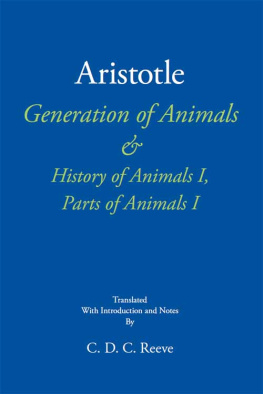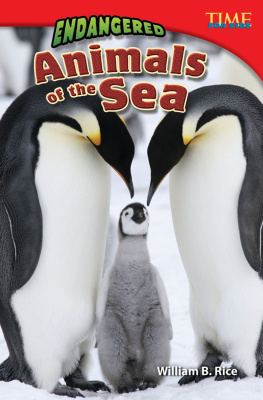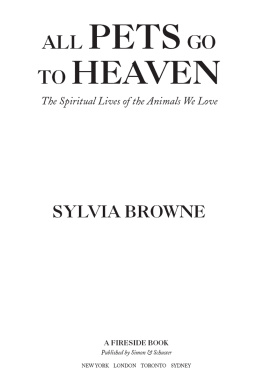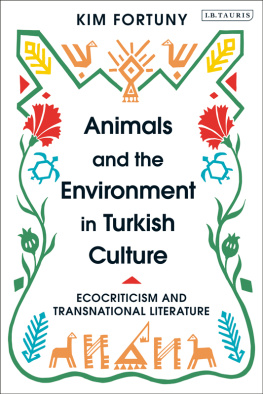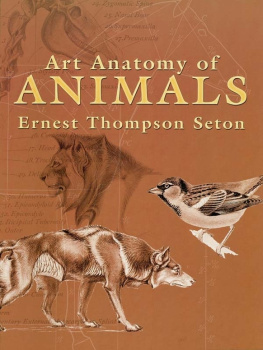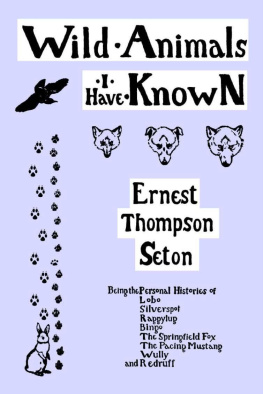Other Selves
Animals in the Canadian Literary Imagination
Other Selves
Animals in the Canadian Literary Imagination
31 REAPPRAISALS: CANADIAN WRITERS
Edited by Janice Fiamengo

University of Ottawa Press 2007
All rights reserved. No parts of this publication may be reproduced, stored in a retrieval system or transmitted in any form or by any means, electronic or mechanical, including photocopy, recording, or otherwise, without permission in writing from the publisher.
NATIONAL LIBRARY OF CANADA CATALOGUING IN PUBLICATION
Other selves : animals in the Canadian literary imagination /
edited by Janice Fiamengo.
(Reappraisals, Canadian writers, ISSN 11896787; 31)
Includes bibliographical references and index.
ISBN 9780-77660645-3
1. Canadian literature (English)History and criticism. 2. Animals in literature.
3. Human-animal relationships in literature. I. Fiamengo, Janice Anne, 1964- II. Series.
PS8101.A48O84 2007 C810.9362 C2007901497-6
Published by the University of Ottawa Press, 2007
542 King Edward Avenue
Ottawa, Ontario K1N 6N5
www.uopress.uottawa.ca
The University of Ottawa Press acknowledges with gratitude the support extended to its publishing list by Heritage Canada through its Book Publishing Industry Development Program, by the Canada Council for the Arts, by the Social Sciences and Humanities Research Council, and by the University of Ottawa.
Cover illustration reproduced by permission from the Museum of Civilization;
Red-throated Diver by John James Audubon. The Birds of America.
London: 18271838. Photographer: Jacques Lessard. No 1993.34804
Contents
The Animals in This Country:
Animals in the Canadian Literary Imagination
JANICE FIAMENGO
(B)othering the Theory:
Approaching the Unapproachable in Bear and Other Realistic Animal Narratives
GWENDOLYN GUTH
Ontological Applause:
Metaphor and Homology in the Poetry of Don McKay
SUSAN FISHER
Drawn from Nature:
Katherine Goviers Audubon and the Trauma of Extinction
CYNTHIA SUGARS
Lick Me, Bite Me, Hear Me, Write Me:
Tracking Animals between Postcolonialism and Ecocriticism
TRAVIS V. MASON
Yann Martels Life of Pi:
Back in the World, Or The Story with Animals is the Better Story
JACK ROBINSON
So That Nothing May Be Lost:
Thomas McIlwraiths Birds of Ontario
CHRISTOPH IRMSCHER
GWENDOLYN DAVIES
Charles G.D. Robertss Cosmic Animals:
Aspects of Mythticism in Earths Enigmas
THOMAS HODD
St. Archie of the Wild:
Grey Owls Account of His Natural Conversion
ALBERT BRAZ
At War With Nature:
Animals in Timothy Findleys The Wars
PETER WEBB
Fear, Friendship, and Delight:
The Appeal of Animals in the Childrens Poetry of Dennis Lee
GREG MAILLET
When Elephants Weep:
Reading The White Bone as a Sentimental Animal Story
ELLA SOPER-JONES
The Mania for Killing:
Hunting and Collecting in Setons The Arctic Prairies
MISAO DEAN
WENDY ROY
BRIAN JOHNSON
Contributors
Albert Braz, University of Alberta
Gwendolyn Davies, University of New Brunswick
Misao Dean, University of Victoria
Susan Fisher, University College of the Fraser Valley
Gwendolyn Guth, Heritage College
Thomas Hodd, University of Ottawa
Christoph Irmscher, Indiana University, Bloomington
Brian Johnson, Carleton University
Greg Maillet, Atlantic Baptist University
Travis V. Mason, University of British Columbia
Jack Robinson, Grant MacEwan College
Wendy Roy, University of Saskatchewan
Ella Soper-Jones, University of Toronto
Cynthia Sugars, University of Ottawa
Peter Webb, University of Ottawa
The Animals in This Country
Animals in the Canadian Literary Imagination
JANICE FIAMENGO, UNIVERSITY OF OTTAWA
Not only are animals incapable of defending their rights, they are similarly incapable of defending themselves against those who profess to defend them. Unlike us, they cannot disown or repudiate the claims made on their behalf That makes speaking for them a greater, not a lesser, moral undertaking.
Tom Regan, The Case for Animal Rights, xiv
INTRODUCTION
Canadian literature is full of claims made on behalf of animals. In defending his perception of animal morality, Ernest Thompson Seton wrote The Ten Commandments in the Animal World (1923) to demonstrate that animals follow their own version of the Mosaic Law: obeying parents, refraining from unnecessary killing and stealing, etc. (he rather fudges adultery and false witness), and looking upon man as God. Fred Bodsworth seeks to avoid such anthropomorphism in Last of the Curlews (1954), a pathos-filled drama of species extinction. He tells us that the curlew possesses a brain so keenly keyed to instinctive responses that there was little capacity for conscious thought or memory (17); yet Bodsworth ascribes to his main character a passionate emotional life characterized by the ecstasy of home-coming (11), the terrors of the snow-filled sky (63), and nostalgic yearning for home (80)emotions seemingly inseparable from thought and memory. In The White Bone (1998), Barbara Gowdy chooses to embrace rather than eschew anthropomorphism, writing of elephants who not only think and communicate but also possess a detailed mythology and account of the afterlife, complete with a description of mans descent from the elephant, a version of the biblical fall in which the eating of animal flesh precipitates the curse of humanity:
Even before the two miscreants had finished their meal they began to shrink. As their bodies grew smaller and thinner, their trunks receded to stubs, their ears contracted, and fur sprouted on top of their heads. They rose up on their hind legs to protest but only a weak howl came from their throats. Furious and defiant they declared themselves carnivores, free to prey on any creature who did not walk upright (as they, in their ceaseless rage, now did). (7)
In each case, the writer seeks to show us the world from the animal point of view, marshalling human perspectives and terms of reference to do so.
Attempts cautious and audacious to represent animal experience have always provoked controversy about the species boundary; about what we can know and to what end, about why and how animals are good to think (Lvi-Strauss, qtd. in Sabloff 30), and whether we have the ability to think them at all. To write against the centuries-old dismissal of animals as mindless and irrational creatures (Hauser xiv), it seems inevitable that we speak of them in human terms. This paradox of humanistic exploration, which relies on the imagination to take us where scientific facts alone cannot, while also recognizing the species-specific bounds of our imaginative perception, informs both the literature that is the subject of this volume and the critical approaches with which we read it. As we shall see, speaking for animals in Canadian literature and literary criticism has always been double-edged: both an exploration of the radical otherness of the animal and an intensely human, and human-centred, endeavour.
Nineteenth-century writers such as Seton, Charles G.D. Roberts, and Margaret Marshall Saunders were, in different ways, writing against the view that animals were mindless automata; they sought to depict them as sentient and even rational beings, what Tom Regan calls subjects of lives (
Next page

